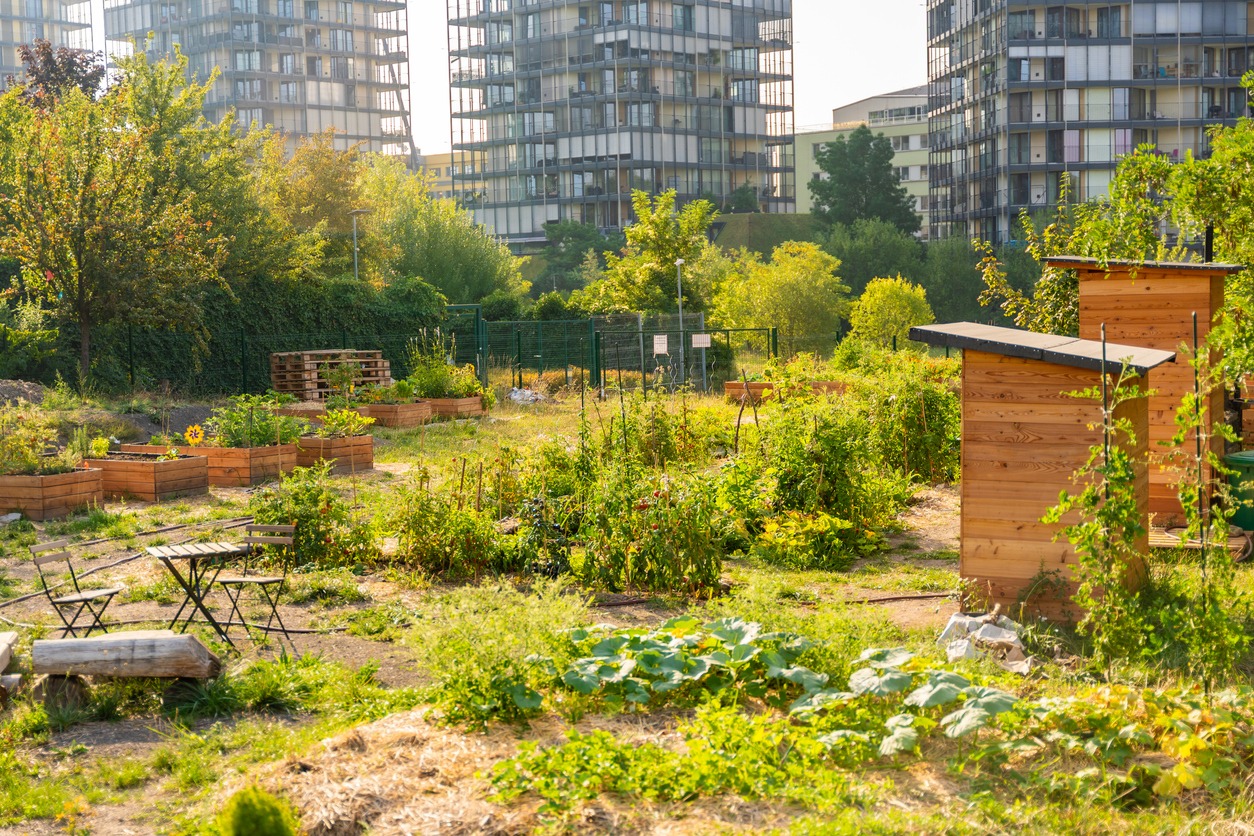You might think of farming as something that happens in wide open fields far from city life, but today, more and more urban neighborhoods are reclaiming vacant lots, rooftops and alleyways to grow food and heal soil, communities and local ecosystems. Regenerative farming in urban settings offers a powerful pathway from seed to table.
What Is Regenerative Farming?
Regenerative farming is an approach to agriculture focused on restoring and enhancing ecosystem health, rather than simply sustaining it. At its core, it prioritizes practices that improve soil health, promote biodiversity, and minimize dependence on synthetic fertilizers and pesticides.
These methods include minimizing soil disturbance, keeping the ground covered with plants or mulch, maintaining living roots in the soil for as long as possible, rotating crops to increase crop diversity, and integrating animals or composting systems to naturally recycle nutrients.
Unlike traditional organic farming, which focuses on avoiding harmful inputs, regenerative farming takes a step further — it aims to actively enhance ecosystem functions over time. This means boosting soil fertility, capturing carbon through soil sequestration and strengthening natural water cycles, creating a system that becomes healthier and more resilient with each growing season.
Why Does Regenerative Farming Work in Cities?
With 2.4 billion people facing food insecurity worldwide, local regenerative farms offer resilient systems where soil, plants and communities thrive together, even under climate stress. Here are some reasons why it’s worth reviving in urban communities:
- Local food access and security: Urban farms close the gap between growing and eating, delivering fresher produce with fewer emissions. Food often travels about 1,500 miles from farm to plate in the United States, so local growing sharply cuts that footprint, while strengthening community resilience.
- Reclaiming vacant land: Cities often have abandoned lots, brownfields or underused rooftops. Converting them into productive green space helps improve soil, reduce stormwater runoff and revive neighborhoods.
- Resilience to climate stress: Healthier soils hold more water and resist erosion. More green space helps mitigate city heat islands. Diverse plantings support a greater variety of pollinators and promote ecological balance.
- Strengthening community and economy: Urban regenerative projects often provide jobs, training and gathering spaces. They help people reclaim control over their food systems.
The Urban Regenerative Farming Process
Bringing regenerative farming into cities takes creativity, collaboration and care for every stage of growth. From planting seeds in compact spaces to harvesting produce for local tables, each step follows nature’s rhythm, rebuilding soil health, conserving resources and strengthening communities along the way.
Select the Site and Prepare the Soil
Begin by selecting a site, such as a rooftop, vacant lot or community garden. Test the soil for contaminants before planting. Like lavender trees, that only thrive in well-drained soil, urban regenerative gardens need good drainage and soil structure to avoid root rot and compaction. Add compost, mulch and organic matter to boost fertility and preserve soil health with minimal tilling.
Plant Diverse Crops and Perennials
Instead of monocultures, plant a mix of vegetables, herbs, perennials and nitrogen-fixing legumes, so your system is resilient and cycles nutrients internally.
Maintain Continuous Ground Cover and Living Roots
Let cover crops or companion plants fill gaps so the soil is rarely bare. This reduces erosion and maintains active microbial life.
Integrate Compost, Micro-Livestock or Worm Farms
Bring in organic waste from your household or neighbors. Utilize worms, compost bins or even small animals — if permitted by local regulations — to recycle nutrients back into the soil.
Harvest, Value-Add and Distribute
Harvest produce at peak freshness. Some urban farms also process items or offer direct sales, community-supported agriculture boxes or free distributions for low-income households.
Regenerate Each Season
Every year, refine the mix of crops, integrate lessons, replenish organic matter, rotate beds and experiment with perennials to reduce the need for replanting. Over time, the system becomes more self-sustaining.
Roadblocks on the Green Path
Urban regenerative projects face real hurdles. Land access is often temporary, with gardens displaced by new developments. Many sites also face soil contamination. A 2022 study in Nairobi found unsafe levels of heavy metals, such as lead and cadmium, in agricultural soils at the intersection of urban and rural zones. Limited infrastructure, water access and restrictive policies can further slow progress, especially for beginners still learning regenerative methods.
How You Can Help
You don’t need to own farmland to join this movement. Here’s how you can get involved:
- Start small in your backyard or balcony: You can apply regenerative ideas even in a pot or container garden by using compost, minimizing disturbances and growing cover plants.
- Volunteer or join a community garden: Many urban farms welcome help, and it’s a great opportunity to learn.
- Advocate locally: Urge your city councils to allocate vacant lots for regenerative farming, adjust zoning rules or provide small grants.
- Support local farming projects: Buy produce from a nearby regenerative urban farm, donate to it or spread awareness.
- Share knowledge: Encourage neighbors, organize workshops or collaborate with schools.
Planting the Future, One City at a Time
Reviving regenerative farming in urban communities is more than a green ideal — it’s a tangible way to reconnect people with food, heal the soil and fortify cities against climate change. From seed to table, the path is rich with ecological, social and nutritional benefits. It won’t always be easy — land access, soil contamination, infrastructure and regulations present challenges — but every plot, every gardener and every seed counts.
Source link
Jane Marsh biofriendlyplanet.com


